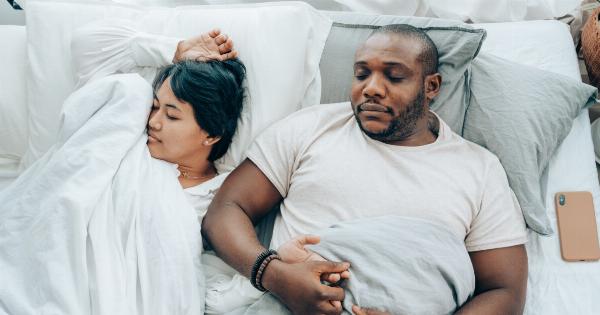Children need proper sleep to grow, learn, and function at their best. However, many factors can disrupt their sleep, leaving them tired, irritable, and unable to concentrate during the day.
In this article, we will explore some of the common troubles that take away children’s snooze and discuss ways to address them effectively.
1. Electronic Devices
In today’s digital age, electronic devices such as smartphones, tablets, and gaming consoles are easily accessible to children.
The blue light emitted by these devices interferes with the production of melatonin, a hormone that helps regulate sleep. Encourage your child to limit screen time, especially before bedtime.
2. Irregular Sleep Schedule
A consistent sleep schedule is important for children. Establishing a regular routine, including a fixed bedtime, will help their bodies adjust and promote better sleep.
Avoid allowing late nights or inconsistent bedtimes, as this can disrupt their internal body clock.
3. Anxiety and Stress
Children can experience anxiety and stress from various sources such as school, family issues, or peer pressure. These emotional burdens can significantly impact their sleep.
Create a calm and peaceful environment in their bedroom, talk to them about their worries, and consider relaxation techniques such as deep breathing or listening to calming music.
4. Uncomfortable Sleep Environment
A comfortable sleep environment plays a crucial role in promoting quality sleep for children. Ensure the room is cool, quiet, and dark. Invest in a suitable mattress and bedding that provides adequate support and comfort.
Consider using blackout curtains or a white noise machine to eliminate any distractions.
5. Poor Sleep Habits
Some children develop poor sleep habits, such as staying up too late, consuming caffeine or sugary snacks before bed, or engaging in stimulating activities close to bedtime.
Encourage healthy sleep habits by promoting relaxation activities, avoiding excessive sugar or caffeine intake, and setting clear boundaries.
6. Sleep Disorders
Some children may suffer from sleep disorders that can significantly affect their snooze. Conditions like sleep apnea, night terrors, or restless leg syndrome can interfere with their sleep quality.
If you suspect your child has a sleep disorder, consult a healthcare professional for proper diagnosis and treatment.
7. Excessive Daytime Napping
While napping is beneficial for younger children, excessive daytime napping can interfere with their ability to fall asleep at night. Limit daytime naps and ensure they are not too close to bedtime.
Adhere to age-appropriate nap durations to prevent disrupting their nighttime sleep pattern.
8. Poor Sleep Hygiene
Teaching children good sleep hygiene habits is essential for healthy sleep. Encourage regular exercise, but avoid vigorous activities close to bedtime. Ensure they have a balanced diet and avoid heavy meals or snacks right before bed.
Emphasize the importance of a relaxing bedtime routine that includes winding down activities like reading or taking a warm bath.
9. Environmental Factors
Environmental factors such as excessive noise or uncomfortable room temperature can disturb a child’s sleep. Ensure their bedroom is free from loud noises or disturbances, and maintain a comfortable temperature that promotes sound sleep.
A consistent and soothing white noise can also help mask disruptive sounds.
10. Lack of Physical Activity
Regular physical activity is essential for promoting overall health and better sleep. Lack of exercise can lead to restless nights and difficulty falling asleep.
Encourage your child to engage in physical activities during the day, ensuring they have a healthy balance between mental stimulation and physical exertion.






























